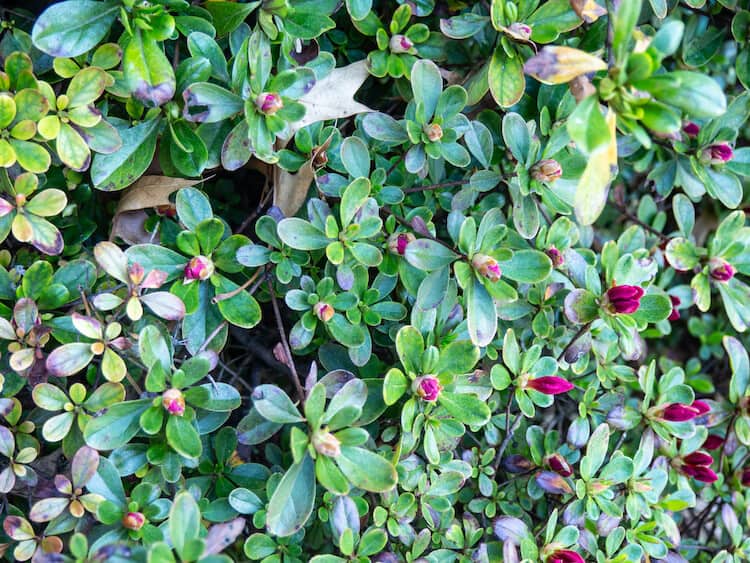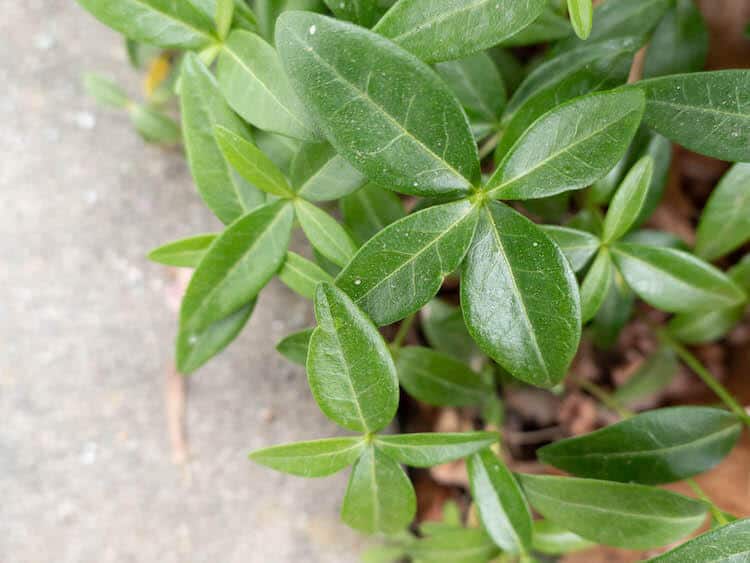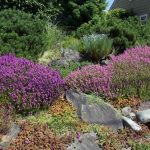Today, we'll be looking at Pachysandra seeds care and how to plant them for your gardening benefits. Pachysandra terminalis, also known by its common name "Japanese spurge," is a versatile evergreen ground cover plant.
Pachysandra flourishes all year round and is self-sustaining in any area it finds itself; it thrives in poor or acidic soil type and landscape areas with an abundant shade such as large spreading trees, back of building walls or fences.
This ground cover plant forms a dense green blanket cover on bare soil and is suitable as a border plant along driveway or walkway edges.
Table of Contents
Pachysandra Seeds Planting and Growth Requirements
Below is a detailed overview of the Pachysandra seed plant:
- Origin: Japan, China and some parts of Asia
- Scientific name: Pachysandra terminalis
- Other names: Pachysandra, Japanese spurge, Green carpet
- Family: Buxaceae
- Hardiness: USDA zones 4-7
- Type: Evergreen low-growing cover plant
- Height: Up to 10 inches
- Soil type: Moist well-drained soil, well-cultivated with compost. Using a soil Ph tester, Test and then adjust the acidity level of the soil to maintain a constant pH of 5.5-6.5.
- Light: Partial to full shade, too much exposure to the sun will cause the foliage to bleach out, most notably in winter.
- Humidity: Average
- Toxicity: Non-toxic
- Pests: Slugs and snails
How to Plant Pachysandra Seeds
Pachysandra is a natural plant to cultivate, and once deep-rooted, it spreads entirely on the ground. Planting these seeds is not time-consuming and can be a lot of fun, a lot of gardeners calls the process another form of leisure.
There are many varieties of Pachysandra available to plant-based on preference and location.
Follow these steps below, and your planting success is guaranteed.
Read Also: Creeping Thyme vs Blue Star Creeper
Picking a Location
Pachysandra seeds thrive best in areas that are partial to shade fully. Too much sun exposure will bleach out the green foliage of the plants and cause it to be abnormally yellow, a situation known as plant chlorosis.
For maximum growth, pachysandra plants depend on protection from the sun all year round during summer and winter.
Hence, under large shady trees or behind building walls or fences, the best location for planting them is because these structures will protect Pachysandra from winter "burn" that turns the leaves lifeless.
Soil and Planting Pachysandra
Pachysandra thrives best in fertile, well-drained soil. It prefers soil that has an acidic ph. of 5.5-6.5. The recommended growing zone is between is 4 through 7.
Before planting any ground cover plant, it is essential to remove any existing weeds. Failure to rid the ground of weeds will affect the growth of the new plants and their visual looks.
After weeding out debris, before planting, make sure to enrich the soil with decayed manure, peat moss, or rotten leaves because they prefer moist soil that is rich organic humus.
Smaller pachysandra plants should be planted within a 6 and 12 inches (15 to 30 cm.) distance apart to accommodate their spread, but you can also plant them more closely if you prefer to fill and spread in an area more rapidly.
Newly planted Pachysandra requires regular watering until the roots are deep-rooted. Water the new plants carefully and supply 2 inches (5 cm.) of manure to help the root system retain water.
The best planting tools for planting Pachysandra plants is a simple mason's trowel, gently open up a small compartment in the loosened soil, put in the plant, and lightly compress it around the plant base.
Read Also: What is Perlite Used For?
Pachysandra Seeds Care
Now that you already know how to grow pachysandra plant, let's look at the most effective pachysandra seeds care tips.
Generally, pachysandra plants are low-maintenance ground covers, so they require only minimal care to look their best. Below are tips on how to care for your pachysandra plant.
Watering
Always leaving your young pachysandra cover plant regularly moist thorough watering during the first year, will help to fix the foundation of the plants, and keep their root systems deep-rooted.
Once the plant's root system is firmly rooted, they can then handle some periods of drought on their own and watering less often.
A mature Pachysandra would also prefer to have moist soil, so ensure to water it regularly to protect the ground from total dry out.
But there should be no cause for alarm if it eventually dries out, your plant would still be healthy on the condition that it doesn't have to go for too long without moisture.
However, during your first year of planting pachysandra seeds, you should water them consistently, fertilize, and mulch them.
For this reason, is why the initial composting and mulching of the soil before planting is essential because it is much easier to mulch then than when the plants are grown.
It's always a good idea to use a few ounces of mulch as a protective covering over the base of your soil where the Pachysandra is rooted.
Mulching will keep the plant deeply rooted and help retain moisture and, in return, prevent the plant from drying out. During the winter, you may need to water the plant moderately.
Light
The pachysandra plant thrives best in full shade. It is the best ground cover plant to use under the shade of large spreading trees or to form a fancy dense green blanket shrub.
When Pachysandra is planted under the required growth conditions like partial to full shade, it will thrive up to a height of about 10 inches tall. When your pachysandra plants grow to a maximum height of 6 inches only, that is an indication of poor growing conditions.
This ground cover plant tolerates the sunny summer sun than the cold winter sun, and it may struggle to survive during summer seasons more than in winter.
If the only light requirement you have for the pachysandra plant is partial sunlight, try to make sure the plant gets morning sun and afternoon shade, this way; it is protected from the strongest ray of sunshine of the day.
An indication of too much sun exposure is when your plant leaves start bleaching, and such scenario all you need do is to take it to a more suitable location; preferably one with full shade.
Pruning
The pachysandra plants are ideal for the hands-free gardener who is too busy to spend too much time on plant care and prefers pants that are mostly self-reliant without minimal intervention from you.
This ground cover plant is for such a gardener because it will grow and establish a green blanket whether or not you prune it, but to get the best results, periodic pruning is required.
Because Pachysandra plants grow and spread vigorously, you should prune periodically to keep it from becoming out of control. This periodic clipping will take off any broken foliage or branches.
It will assist in sprouting new growth, maintaining your ground cover plants, keeping them refreshed and virtually beautifully all year long.
Furthermore, trimming your Pachysandra in spring will assist in keeping the plant neat and encourage new growth. Pruning shears are the right garden tool to use, or if the pachysandra plant is in a more substantial mass, you could opt-in for a lawnmower.
There's a need to 'mow' down your pachysandra plants once in a year, and this will help to keep your pachysandra plant healthy and in full bloom all season.
Set your to the setting usually required around four or five inches, and mow over the Pachysandra to trim down the overly mature height. Be careful not to destroy the plants. In no time, the Pachysandra will have new dense growth as a result of the trimming.
It is important to keep areas surrounding pachysandra weed-free at all times and maintain close supervision over young plants during dry and summer weather.
If you prefer to encourage an increase in one particular area of the plant, you can clip the tips of the flourishing stems in the early spring or fall.
The stems of pachysandra plants are fragile, so you should take extra care not to destroy them while scraping fallen tree leaves in the garden.
They are also easily propagated using softwood cutting in early summer. Dig up and divide a deep-rooted bunch of Pachysandra. You can quickly replant the larger plants or pull them apart into separate shoots.
Read Also: Best Loppers for Pruning
Common Problems of Pachysandra Plant
One of the benefits of this ground cover plant is that it is pest and disease-free. Usually, the pests that may likely affect the Pachysandra will be snails and slugs.
However, Pachysandra may be affected by a fungal disease called Volutella leaf blight, which can damage both leaves and stems. Ensuring that plantings receive good air circulation and are well spaced will reduce the likelihood of contracting this infection.
Conclusion
Growing ground cover plants is a delightful and easy way to add beauty to your lawn or garden and a perfect solution to solve your imperfect landscape solutions.
The pachysandra seed is ideal cost-efficient ground cover plants that require minimal care from you and supplies you with a constant amount of evergreen beauty all year round.
Now that you know about pachysandra seeds care to an extent, you can enjoy this low-growing nature beauty in the shady spots of your landscape.







Leave a Reply